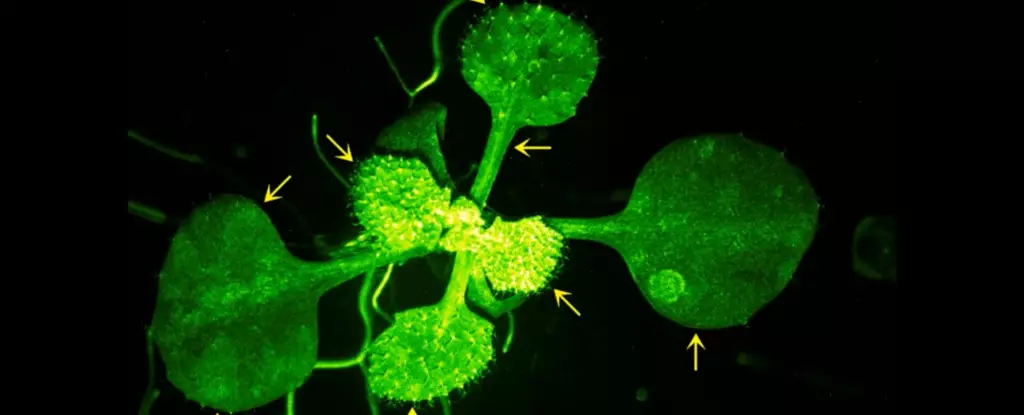Plants may seem stationary and silent to the naked eye, but they are actually engaged in a complex system of communication and defense. Recent research has shed light on the fact that plants release airborne compounds as a way to warn neighboring plants of potential threats and repel hungry herbivores. These compounds play a crucial role in the survival and protection of plants in their ecosystem.
A team of Japanese researchers conducted a groundbreaking study to understand how plants receive and respond to these aerial alarms. By using real-time imaging techniques, they were able to observe the reactions of plants when exposed to volatile compounds emitted by injured and insect-riddled neighboring plants. This study filled a significant gap in our knowledge of plant communication, as it focused on the receiving end of the messages sent out by plants.
The Experiment and Its Findings
In the experiment, Caterpillars were set upon tomato plants and Arabidopsis thaliana, and the responses of a separate Arabidopsis plant were monitored. These plants were genetically modified to contain biosensors that fluoresced green in response to an influx of calcium ions, a sign of cellular communication. The researchers found that certain compounds, such as Z-3-HAL and E-2-HAL, induced calcium signals in the plants, triggering a cascade of responses.
By engineering Arabidopsis plants with fluorescent sensors exclusively in guard, mesophyll, or epidermal cells, the researchers were able to pinpoint which cells were the first to respond to the danger cues. Guard cells, mesophyll cells, and epidermal cells all played distinct roles in the plant’s defense mechanism. Guard cells, responsible for regulating stomata openings, were the first to generate calcium signals when exposed to the volatile compounds.
Stomata, small pores on the surface of plant leaves that regulate gas exchange, were found to be crucial in the plant’s response to threats. Pre-treating plants with a phytohormone that closes stomata significantly reduced calcium signaling, indicating that stomata act as the “nostrils” of the plant. This finding highlights the importance of these microscopic structures in plant defense mechanisms.
Plants are far more sophisticated and dynamic than we often give them credit for. The intricate web of communication and defense mechanisms that plants employ to protect themselves and alert neighboring plants to potential dangers is truly remarkable. By delving into the world of plant signaling and responses, scientists are gaining a deeper understanding of the interconnectedness of life in the natural world.


Leave a Reply